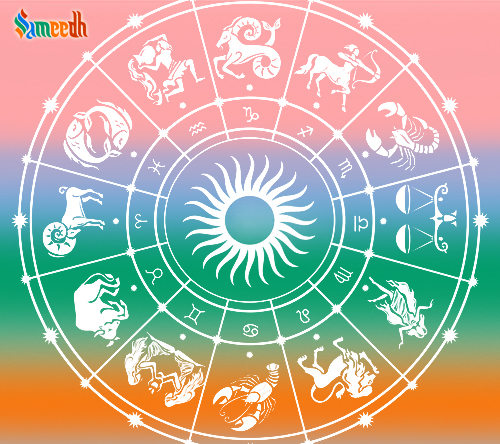The crescent moon on Lord Shiv’s head is a distinctive and symbolic feature often associated with him in Hindu iconography. This symbol holds various meanings and significance within the context of Shiv’s mythology and the broader spiritual and cosmic themes.

The presence of the crescent moon is associated with several myths and stories, and it carries deep symbolism within Hinduism. Here are some key explanations for why Lord Shiv is often depicted with a crescent moon on his forehead:
- Deity of Time and Cycles: The crescent moon is a symbol of time, and Lord Shiv, in his aspect as Mahakal (Great Time), is beyond the constraints of time. The waxing and waning of the moon represent the cyclical nature of time and the continuous process of creation, preservation, and dissolution in the cosmic order.
- Connection with the Chandrashekhara epithet: Lord Shiva is often referred to as “Chandrash ekhara,” which means “the one with the moon on his head.” The crescent moon adorning Shiv’s locks is a representation of his control over the cosmic cycles and the celestial bodies.
- Marriage with Goddess Chandra: In some myths, it is said that Lord Shiva married the daughter of Daksh, the Moon (Chandra). The crescent moon on Shiv’s head is a symbol of this celestial union. This story is also connected with the waxing and waning phases of the moon, mirroring the cyclical nature of life.
- Symbol of Cool Energy: The moon is traditionally associated with coolness, and the crescent moon on Shiv’s head is thought to symbolize the calming and soothing energy of the deity. Shiv, as a yogi, represents the balance of opposites, and the moon’s cool glow complements his intense and fiery aspects.
- Nataraj Form: In Shiva’s Nataraj form, where he performs the cosmic dance, the crescent moon is often depicted as a decorative element on his jata (matted hair). This emphasizes the divine and aesthetic nature of Shiv’s dance, symbolizing the cosmic cycles set in motion by his movements.
- Connection with Soma: The crescent moon is associated with Soma, the divine nectar or elixir, in Hindu mythology. Soma is often connected with the moon, and Shiv, as a yogi and ascetic, is sometimes depicted with a crescent moon, signifying his connection with the spiritual essence of Soma.
- Depiction of Shiva’s Asceticism: The crescent moon is also symbolic of Shiva’s ascetic lifestyle. The crescent is often depicted as a small sliver, signifying that Shiva’s ascetic practices have made him content with even a modest offering, emphasizing simplicity and detachment.
In summary, the crescent moon on Lord Shiv’s head is a multifaceted symbol, representing time, cosmic cycles, celestial marriage, cool energy, and asceticism. It adds to the rich tapestry of symbolism associated with Shiv, emphasizing his role as both a transcendent deity and an ascetic yogi.
